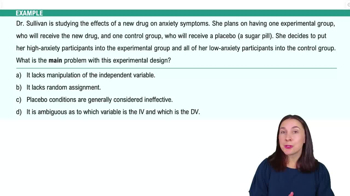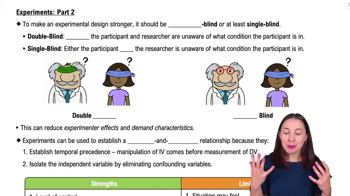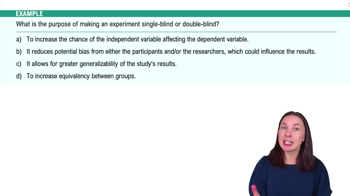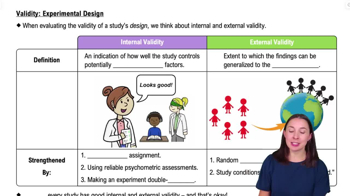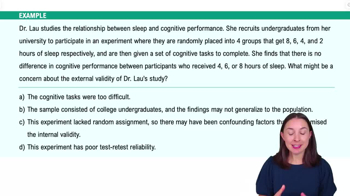Table of contents
- 1. Introduction to Psychology1h 43m
- 2. Psychology Research2h 20m
- 3. Biological Psychology2h 41m
- 4. Sensation and Perception28m
- 5. Consciousness and Sleep32m
- 6. Learning41m
- 7. Memory34m
- 8. Cognition37m
- 9. Emotion and Motivation35m
- 10. Developmental Psychology33m
- 11. Personality48m
- 12. Social Psychology41m
- 13. Stress and Health41m
- 14. Psychological Disorders44m
- 15. Treatment47m
2. Psychology Research
Intro to Research Methods
Struggling with Psychology?
Join thousands of students who trust us to help them ace their exams!Watch the first videoMultiple Choice
The ultrasound report tells Shaniqua and Carlotta that their developing infant is about one inch long and has eyes, a nose, lips, little arms and legs, and a beating heart. Given this information, the current period of prenatal development is the _____ period.
A
germinal
B
preoperational
C
end of the fetal
D
embryonic
 Verified step by step guidance
Verified step by step guidance1
Understand the stages of prenatal development: The three main stages are the germinal, embryonic, and fetal periods.
The germinal period is the first two weeks after conception, characterized by rapid cell division and the beginning of cell differentiation.
The embryonic period lasts from the third to the eighth week after conception. During this time, major organs and structures begin to develop, including the heart, eyes, arms, and legs.
The fetal period begins at the ninth week and continues until birth. This stage is marked by the growth and maturation of the already formed structures.
Given the description of the developing infant having eyes, a nose, lips, little arms and legs, and a beating heart, these features align with the embryonic period, where these structures are formed.

 1:46m
1:46mWatch next
Master Roadmap of the Lesson with a bite sized video explanation from Hannah Gordils
Start learningRelated Videos
Related Practice










